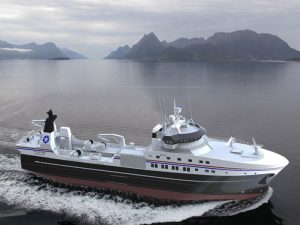
Optimarin BWTS picked for advanced U.S. built trawler
FEBRUARY 8, 2016 — An advanced stern trawler currently completing at the Dakota Creek Industries shipyard, Anacortes, WA (see earlier story), will be the first vessel in the fishing segment to be

FEBRUARY 8, 2016 — An advanced stern trawler currently completing at the Dakota Creek Industries shipyard, Anacortes, WA (see earlier story), will be the first vessel in the fishing segment to be

Norway’s Optimarin, which claims to be on the brink of full USCG approval of its UV based system, says the decision is good news.
The Coast Guard has told UV system manufacturers that it will not accept the Most Probable Number (MPN) testing method in its approval process. The MPN methodology evaluates organisms on the basis of “viable/unviable,” with most UV systems depositing “unviable” organisms back into the water – meaning they are still alive but cannot reproduce.
The USCG says that FDA/CMFDA test, which judges life forms as “living/dead,” must be the standard for approval.
Optimarin says that having systems with USCG approval is imperative for any shipowner wanting to discharge ballast in U.S. waters after January 1,2016.
“This is a clear indication to the industry that USCG wants absolute certainty with regard to standards – they do not want living organisms deposited in their territory,” comments Tore Andersen, Optimarin’s CEO. “MPN is acceptable for IMO, but that won’t be any consolation to shipowners with global fleets that want the flexibility of sailing in and out of U.S. waters.”
Mr. Andersen notes that while the USCG is currently accepting vessels with approved Alternate Management Systems (AMS) based on testing by another flag state, can discharge ballast in that approval is good for only five years after the vessel’s compliance date.
“At that point, if they haven’t met the USCG’s own ‘instant kill’ standard, they will have to be changed,” says Mr. Andersen. “That’s a burden of potential cost and uncertainty that shipowners operating in today’s tight market shouldn’t have to contend with.”
He says that Optimarin, which has over 20 years of industry experience and installed the world’s first commercial BWT system in 2000, is the only UV manufacturer that is currently within “touching distance” of USCG approval.
Its technology successfully satisfying the FDA/CFMDA criteria during testing this year. Further tests in other water salinities are scheduled for spring 2016, after which point approval is expected later in the year.
Mr. Andersen says the system’s power is the key to its efficacy.
“Each of our system lamps has a 35 kW capacity, which is huge for a UV system. That power instantly kills invasive organisms and that’s exactly what USCG wants to see,” he says.
Optimarin has now sold over 350 of its systems to shipowners across the world, with more than 270 installed, over 60 of which are retrofits.
One major client of the business is Saga Shipholding. Optimarin signed a frame agreement with the open hatch bulk shipper in 2011 and has since gone on to install 26 systems, including eight newbuild installations, on a fleet that currently numbers 32 vessels. The remainder will receive their BWT units during 2016.
Eivind Holte, Senior Technical Manager Saga Shipholding (Norway), notes that Saga’s ships are frequent visitors to the U.S., servicing ports on both the West and East Coasts.
“I can’t overstate the importance of USCG approval to us,” he stresses, “it’s basically a ‘ticket to trade.’ We’re very happy that we chose Optimarin, for both their system’s technology and its compliance, with full USCG approval on the horizon.”
AMS accepted units, he says, present a “real risk.”
“They’re compliant now, but will they be in five years time? The cost of changing existing systems across a fleet to ensure compliance would be disastrous, just disastrous,” says Mr. Holte.
“Making the right choice for BWT systems is crucial,” he says. “Shipowners have to choose systems and suppliers they trust. We did, and that decision, now more than ever, looks to be completely correct.”
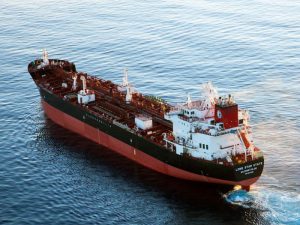
The Jones Act tanker is the first of a five-tanker contract between NASSCO and APT, covering design and construction of five 50,000 deadweight-ton, LNG-conversion-ready product tankers with a 330,000 barrel cargo capacity.
In addition to being LNG conversion ready, the 610 ft long ECO class tankers are a new “ECO” design, offering significantly improved fuel efficiency and the latest environmental protection features including a Ballast Water Treatment System.
Helping achieve the fuel savings are a G-series MAN Diesel & Turbo ME slow-speed main engine and an optimized hull form.
“The delivery of this new vessel symbolizes the future of American shipping: innovative, cost-effective, and green. The Lone Star State, along with the four others we are currently building for APT, will be among the most fuel-efficient and environmentally-friendly tankers—anywhere in the world,” said Fred Harris, president of General Dynamics NASSCO. “These tankers are 33 percent more fuel efficient than the previous five tankers built by NASSCO for APT. We are proud to be leading the charge in building these next generation of tankers.”
Between 2007-2010, NASSCO built five similar State Class product tankers for APT.”We are very excited to be taking delivery of the Lone Star State. This state-of-the-art tanker is a welcome addition to our growing fleet and will provide safe, reliable and efficient transportation service to our customers for many years to come,” said Robert Kurz, vice president of Kinder Morgan Terminals and president of American Petroleum Tankers. “We thank NASSCO for their tremendous support in achieving this important milestone.”
The ships have designed by DSEC, a subsidiary of Daewoo Shipbuilding & Marine Engineering (DSME) of Busan, South Korea. The design incorporates improved fuel efficiency concepts through several features, including a G-series MAN Diesel & Turbo ME slow-speed main engine and an optimized hull form. The tankers will also have the ability to accommodate future installation of an LNG fuel-gas system.
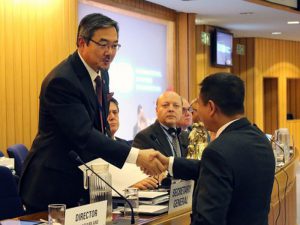
The International Chamber of Shipping (ICS) says that the fixing of a definite implementation dategives shipowners some of the certainty needed to make important decisions about whether to refit the new mandatory treatment equipment or otherwise to start sending ships for early recycling.
However, IMO has to finalize the much needed revision of its type approval guidelines for Ballast Water Treatment Systems (BWTS).
The International Chamber of Shipping says that this revision is needed “as soon as possible, in order to ensure that shipowners can have absolute confidence that the expensive equipment they will soon have to install will be effective in treating ballast water conditions normally encountered during worldwide operations and be regarded as fully compliant during Port State Control inspections.”
In other words, the IMO Type Approval process currently in place doesn’t give absolute confidence that an IMO approved system will actually work. That, of course, is why the IMO approvals of BWTS have never been taken at their face value by the U.S., which has its own, tougher, approval system in place.
The International Chamber of Shipping has never been very happy about that and says that entry into force of the new IMO regime “does not resolve the extreme difficulties that still exist in the United States. There is still great uncertainty with respect to the more stringent United States approval regime for treatment equipment, which started to be enforced in January 2014 (the U.S. not being a Party to the IMO Convention).
“The U.S. regulations require all ships that discharge ballast water in U.S. waters to use a treatment system approved by the Coast Guard. However, because no systems have yet been approved, ships already required to comply with the U.S. regulations have either been granted extensions to the dates for fitting the required treatment systems or else permitted to install a USCG accepted Alternate Management System (AMS), in practice a system type-approved in accordance with the current IMO Guidelines.
“However, an AMS will only be accepted for operation for five years, after which time a fully USCG approved system must be installed. But the USCG does not guarantee that an AMS will be subsequently granted full approval. Hence shipowners that may have installed an AMS in good faith, at a cost of between $1 million -5 million per ship, might then have to replace the system completely after only five years. This is a particular concern for operators that have installed ultra-violet (UV) systems.
“There are over 50 treatment systems approved under the current IMO regime, but worryingly fewer than 20 manufacturers have so far indicated their intent to submit their systems for U.S. approval. The conflicting IMO and U.S. requirements, when combined with the complete lack of systems fully approved by the USCG, could produce an impossible situation in which some ships might not be able to operate in U.S. waters when the IMO Convention enters in force.”
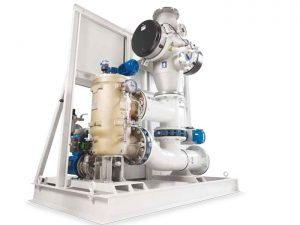
The seven retrofit installations will bring the total number of Hyde Guardian and Guardian Gold systems fitted on RCL group vessels to twenty-seven, including both newbuilds and retrofits.
Hyde Marine has already completed retrofits on over ten RCL vessels, and the orders issued for this next series of vessels will ensure the supply of treatment systems through 2016 in accordance with the compliance dates for each vessel.
The cruise line is one of seven Hyde Marine customers that have installed ten or more Guardian systems.
“Hyde Marine has been a valuable partner in assisting us as we navigate the new regulatory requirements for ballast water treatment,” said Michael Jones, Vice President Supply Chain Management, Royal Caribbean Cruises Ltd. “Our crews are pleased with how easily and reliably the system operates, and with how seamlessly they integrate with existing automation systems.”
“Hyde Marine is very pleased to expand upon our successful partnership with RCL,” said John Platz, President Hyde Marine. “This clearly demonstrates our customer’s continued satisfaction with our products and service, and helps RCL to ensure compliance and commonality in their fleet.”
Hyde Marine has sold more than 430 of its ballast water treatment systems to date. The Hyde Guardian Gold BWTS uses space-efficient filtration and ultraviolet disinfection to treat ships’ ballast water to prevent the spread of invasive species from port to port.
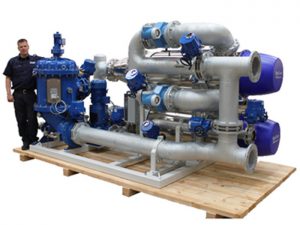
NOVEMBER 9, 2015 — Aalborg, Denmark, based DESMI Ocean Guard A/S is to supply 14 RayClean ballast water treatment systems (BWTS) for a series of new container vessels to be built at
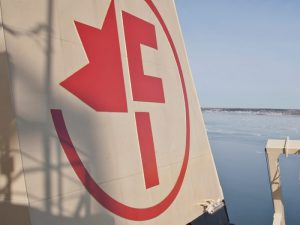
The ship, the 34,500 dwt ocean going laker Federal Biscay, is fitted with a ballast water treatment system (BWTS) — a first for ships transiting the Great Lakes, says Fednav, the largest international operator in the Great Lakes/Saint Lawrence Seaway System.
Fednav announced in April that it would equip all 12 ships in its Oshima shipyard newbuild program with BallastAce ballast water treatment systems (BWTS) (see earlier story).
Developed by JFE Engineering Corporation in Japan, the BallastAce system will be effective in both fresh and salt water. BallastAce operates through a combination of filtration and sodium hypochlorite (bleach) injection into the ship’s ballast system.
“This is a pivotal step in protecting the Great Lakes against invasive species and preserving biodiversity in the region,” said Paul Pathy, president and co-CEO of Fednav Limited. “Fednav is proud to be the first shipping company to deploy such systems, and we are pleased that the Federal Biscay is serving as a test ship for this technology.”
Fednav will start using BallastAce in the Great Lakes at the opening of the St. Lawrence Seaway in 2016.
With the assistance of Fednav, the BallastAce system (which is already USCG AMS approved) will continue the necessary testing for full U.S .Coast Guard type approval for fresh, brackish, and salt water at the GSI facility in Superior, WI, and at MERC in Baltimore, MD. During the first six months of 2016, the system installed on the Federal Biscay will be be used for the shipboard testing element of the type approval requirements.
Fednav expects that the IMO Ballast Water Management Convention, to which Canada is a signatory, will most likely enter into force in 2016, the year the U.S. Coast Guard and EPA require the installation of systems on ships trading in US waters.
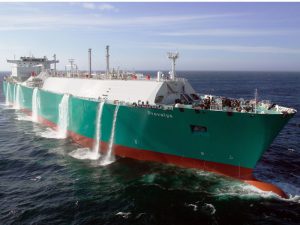
Owned by French energy utility Energie and operated by Gazocean, the ship will be fitted with an OceanSaver Mk II BWT system with a treatment capacity of 2 x 3,000 cu. m per hour. OceanSaver will deliver the equipment in 2016.
“We see the contract award as an acknowledgment of our experience with retrofits to LNG carriers, and look forward to delivering this project at the highest industry standards,” says Alan Linderoth, Vice President Sales & Marketing at OceanSaver.
OceanSaver’s Mark II ballast water treatment system delivers high performance filtration in combination with disinfection through patented electrodialysis and has a flexible system installation.
“Our streamlined retrofit concept for efficient system installation receives positive feedback from customers. The Mark II system has a small footprint through its modular nature, which makes it perfect for retrofit,” says OceanSaver Sales Manager Benjamin Pettersson.
OceanSaver’s Mark II system is fully compliant with key regulations, standards and certificates, including IMO and US Coast Guard AMS.
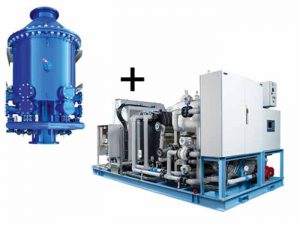
“We are very pleased to be awarded this contract. It proves OceanSaver’s strong position in the market and the increasing adoption of our leading technology by both shipyards and shipowners, who are increasingly preparing for a life post full IMO ratification,” says OceanSaver CEO Helle Hundseid.
OceanSaver’s Mark II BWTS is MO compliant and USCG AMS approved. It delivers high performance filtration in combination with disinfection through patented electrodialysis.
“Our easy-to-operate, energy optimized and compliant system represents a streamlined solution for both retrofit and newbuildings. It offers customers a small footprint through its modular nature and is simple to maintain. All features are valued by our customers. We look forward to delivering our Mark II BWT system to STX Offshore & Shipbuilding, and a good cooperation throughout the project,” says Alan Linderoth, Vice President Sales & Marketing.
OceanSaver will deliver its Mark II BWT system by Q3 2016. Contract value is undisclosed.
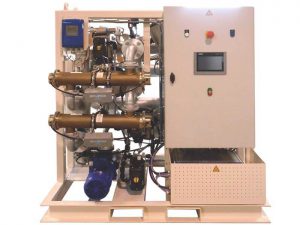
JUNE 25, 2015 — French ballast water treatment specialist Bio-UV has developed a version of its Bio-Sea BWTS for vessels with low flow rate ballast water pumps, such as super yachts, offshore